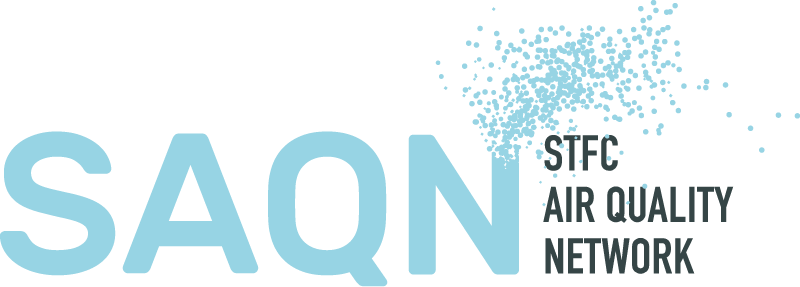

SAQN offers Travel Grants for activity that will enable network members to build collaborations, make new connections, take advantage of STFC capabilities and assist them in proposal development. Students Phoebe Cullen, from the University of Leeds, and Jessie Gould, from the University of Bristol, were awarded grants to attend the CECAM (Centre Européen de Calcul Atomique et Moléculaire) Multiphysics and Multiscale Modelling Targeting HPC School , where they studied the application of computational modelling techniques to air quality problems.
Phoebe writes:
I am an Industrial Placement Student from the University of Leeds, based within STFC Scientific Computing at Daresbury Laboratory, Warrington. My current research is focused on utilising High Performance Computing (HPC) by improving the quality of meshes produced for complex biological simulations. To aid my research, I have been using code_saturne. This is an open-source, multi-purpose Computational Fluid Dynamics (CFD) software used to solve the Navier -Stokes equations for 2-D, 2-D axisymmetric or 3-D flows, primarily developed by EDF.
Thanks to a SAQN Travel Grant, I was able to attend the ‘Multiphysics and Multiscale Modelling Targeting HPC School’, which took place in Bologna on the 30th – 31st October. This event was co-organised by STFC and Cineca and sponsored by the CECAM (Centre Européen de Calcul Atomique et Moléculaire). CECAM is an organisation devoted to promoting fundamental research on advanced computational methods, and applying them to solve challenges faced at the forefront of science and technology. This training course introduced HPC and the capabilities of code_saturne for advanced multi-physics modelling. A selection of engaging tutorials were given over the two days, looking at indoor air quality modelling techniques, including Lagrangian Particle Tracking and turbulence modelling through Large-Eddy Simulation (LES) and different types of Reynolds Averaged Navier Stokes (RANS) models.
The school gave me a brilliant opportunity to get hands-on experience with the software, both using the GUI, and working within the user subroutines themselves. This has helped deepen my understanding of the methodology currently used in code_saturne to modify and join the meshes used in modelling, a feature crucial to my project. Additionally, I was able to run simulations on GALILEO100, a supercomputer located at Cineca.
During my time in Bologna, I also met researchers from across Europe and learnt about their work. Being my first career-related trip, this was an inspiring opportunity to explore the different fascinating applications of scientific computing, particularly within Air Quality, and has consequently enhanced my aspirations to pursue a career in the field. I am so grateful for this fantastic experience, which would not have been possible without the SAQN Travel Grant.
Jessie (a Physics student from the University of Bristol, currently on Industrial Placement at STFC Scientific Computing Department) adds:
I had a wonderful time. It was a great opportunity to enhance my understanding of HPC and its applications to modelling air quality. Starting from the ground up, this course gave me a set of tools to simulate dispersion of particulates from cooking facilities. It highlighted for me how my degree and work experience could be applicable in air quality, and the need that exists for scientists in that area. There is a global challenge of providing safe, healthy and sustainable environments, and I know that the skills and knowledge I gained during this course will have a wide range of applications and propel my ability and motivation to be involved in this kind of work. I’m grateful that the Travel Grant from SAQN made this experience possible for me.

